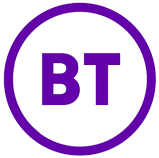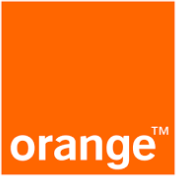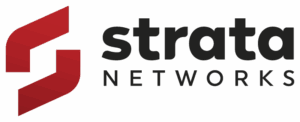Top 5 Network Inventory Management Software Providers for Telecoms in 2025
Trusted by:

















The changing landscape of telecom networks and the running and maintenance of one, in 2025, is more complex than ever. Operators are rolling out 5G at scale, expanding nationwide fiber, and shifting toward cloud-native architectures. At the same time, legacy infrastructure still needs to be maintained, which means teams are often juggling old and new technologies side by side.
Customers now expect seamless, always-on connectivity, while regulators demand transparency, security, and accountability. Competition has also intensified, forcing operators to deliver faster services at lower costs, without sacrificing quality. In this environment, network inventory management has become a critical challenge. Without a clear and accurate view of assets, services, and capacity, operators face serious risks: service outages, wasted investments, and slower rollouts.
Modern network inventory software helps address this challenge by providing operators with a single, reliable view of their infrastructure. The best platforms integrate with OSS and BSS systems, visualize complex network topologies, support automation, and ensure data consistency across all domains.
In this article, we review the top five network inventory management solutions for telecoms in 2025. Each platform has its strengths, but VC4 offers a distinct advantage with its telecom-native approach and focus on operational clarity.
Reviewing the Top 5 Network Inventory Management Software Providers
The telecom software market is full of vendors promising to simplify network operations. But when it comes to network inventory management, not every platform is built with telecom in mind. Some tools began in IT and were later adapted, while others grew out of hardware ecosystems. Only a few solutions truly understand the day-to-day challenges operators face: reconciling live networks with records, protecting revenue, and accelerating service delivery.
The five platforms below represent the leading options in 2025.
1. VC4 – Service2Create (S2C)
About VC4
Headquartered in the Netherlands, VC4 is a specialist in telecom inventory and service management software. Its next-generation platform, Service2Create (S2C), builds on the success of VC4-IMS and has been re-engineered for the realities of today’s telecom networks. Unlike generic IT tools adapted for telecom, S2C is built specifically for operators. It manages physical, logical, service and virtual infrastructure in a single environment. It supports fiber, transport, mobile, and enterprise services, and offers unmatched data accuracy through live reconciliation with the network.
Key Features
- Unified inventory: Combines physical, logical, and service layers
- OSS/BSS and NMS integration: Works with any system through APIs and message brokers
- GIS-based design and rollout tools: Including OpenStreetMap and ArcGIS integration
- Live reconciliation engine: Keeps records accurate by aligning with the real-time network
- Low/no-code configuration: Enables rapid setup and customization
- Deployment flexibility: Available as SaaS, On-Premises or Hybrid.
- TM Forum-compliant APIs for seamless interoperability
- ISO 27001-certified platform ensuring information security management
Strengths
- Purpose-built for telecom, avoiding compromises of IT-adapted platforms
- Fast, modular deployment enabling quicker ROI
- Coverage across fiber, transport, mobile, enterprise, and utilities
- Live reconciliation ensures data accuracy and reduces manual effort
- Proven scalability for both small operators and Tier-1 carriers
- AI-assisted GIS tools for smarter route planning, rollout optimization, and spatial analytics
Considerations
- Smaller ecosystem of third-party add-ons compared to larger incumbents
- Highly customized deployments may potentially require professional services support
Verdict: A telecom-native platform delivering operational clarity, rapid deployment, and unmatched accuracy across multi-vendor environments.pport.
2. ServiceNow
About ServiceNow
ServiceNow is a global IT platform best known for service management across industries. In telecoms, it has expanded through its IT Operations Management (ITOM) and telecommunications service management modules.
Key Features
- Telecom Network Inventory (TNI) for unified lifecycle visibility
- Telecom Service Operations Management (TSOM) for cross-domain event correlation and automation
- Telecom Service Management (TSM) for incident, change, and customer-impact workflows
- AI/ML-enabled alert correlation and predictive anomaly detection
- Cloud-native SaaS with enterprise-grade compliance certifications
Strengths
- Telecom modules layered on an enterprise-proven ITSM platform
- Extensive workflow automation with pre-built templates
- Rich integration ecosystem covering IT, CRM, ERP, and OSS/BSS
- Enterprise-grade security, scaling, and compliance (ISO, SOC, GDPR, FedRAMP)
- Modular adoption: operators can start with telecom extensions and expand gradually
Considerations
- Requires significant customization for deep telecom inventory functionality
- Broader implementations may be resource- and time-intensive
- Higher licensing and ownership costs compared with niche telecom solutions
Verdict: A strong option for operators already invested in ServiceNow, offering workflow-centric automation and cross-domain alignment with the right customization.
3. FNT Software
About FNT Software
Based in Germany, FNT Software delivers infrastructure management solutions for telecom, IT, and data centers. Its Command platform is especially strong in Europe, with deep capabilities in documentation and hybrid infrastructure visibility.
Key Features
- Digital twin model unifying passive, active, and virtual layers
- Comprehensive cable and outside plant management with GIS integration
- Mobile RAN management for multi-technology wireless planning and configuration
- Integrated data center and energy monitoring
- TM Forum-compliant APIs and workflow automation
Strengths
- Strong documentation and infrastructure transparency across domains
- Deep capabilities in outside plant (OSP) and hybrid network environments
- Modular architecture adaptable to telecom, IT, and facilities
- Extensive out-of-the-box model libraries for rapid setup
- Standards-based APIs simplify integration with OSS/BSS systems
Considerations
- Limited adoption outside Europe
- Integration work often required with OSS/BSS stacks
- Smaller IT teams may find full documentation modules complex to manage
Verdict: An excellent choice for operators prioritizing documentation and hybrid infrastructure visibility, particularly within the European market.
4. Netcracker
About Netcracker
Netcracker, part of NEC, is a global heavyweight in OSS/BSS. Its portfolio spans orchestration, billing, customer management, analytics, and network inventory, serving many Tier-1 operators worldwide.
Key Features
- End-to-end OSS/BSS suite including inventory, orchestration, and charging
- Intent-driven orchestration across mobile, transport, fixed, and RAN domains
- Cloud-native microservices architecture with elastic scaling
- Real-time analytics and AI for predictive assurance and optimization
- Proven scalability supporting millions of subscribers globally
Strengths
- Broad and comprehensive OSS/BSS coverage
- Modern microservices foundation supporting agility and modular upgrades
- Embedded AI/ML capabilities for closed-loop assurance and automation
- Deep expertise in large-scale telecom transformations
- Trusted by Tier-1 operators worldwide for mission-critical deployments
Considerations
- Deployment timelines and costs are significant
- Strong vendor involvement may limit flexibility if not managed
- Smaller operators may find its scope exceeds their immediate needs
Verdict: A proven global solution for Tier-1 operators seeking large-scale, end-to-end OSS/BSS transformation, with unmatched breadth but high investment.
5. Ciena Blue Planet
About Blue Planet
Blue Planet is Ciena’s software division, specializing in orchestration, automation, inventory, and assurance. The platform is cloud-native and particularly strong in transport, optical, and hybrid multi-domain environments.
Key Features
- Multi-domain service orchestration (MDSO) across physical and virtual networks
- Advanced transport and optical automation capabilities
- Open, standards-based APIs for interoperability across vendors
- AI-driven service assurance with closed-loop automation
- Containerized, cloud-native deployment
Strengths
- Deep technical expertise in optical and transport domains
- Strong orchestration features for multi-vendor, hybrid networks
- AI-driven automation enhances efficiency and resilience
- Flexible, open architecture supports integration with diverse ecosystems
- Cloud-native foundation allows modular, scalable deployment
Considerations
- Narrower scope compared with full-service inventory platforms
- May require complementary systems for complete inventory coverage
- Best fit for operators with transport- or optical-heavy networks
Verdict: A powerful platform for operators prioritizing orchestration and automation in transport and optical environments, with strong openness and multi-vendor support.e.

Comparison of the Top 5 Solutions
| Vendor | Telecom Focus | OSS/BSS Integration | Global Reach | Best Fit |
|---|---|---|---|---|
| VC4 | High – telecom-native design | Strong API-first approach | Global | Operators of all sizes seeking a future-proof, telecom-specific solution |
| ServiceNow | Medium – telecom modules layered on ITSM | Broad, but customization required | Global | Enterprises and operators already invested in ServiceNow |
| FNT | Medium – strong in infrastructure documentation | Standards-based, requires integration | Europe-strong | Operators prioritizing documentation and hybrid visibility |
| Netcracker | High – full OSS/BSS suite | Very strong, end-to-end | Global Tier-1 | Large operators with multi-year transformation programs |
| Blue Planet | Medium – orchestration/ transport focused | Open APIs, modular integration | Global | Operators centered on transport and optical domains |
How to Select the Right Inventory Platform
When choosing a network inventory solution, operators should weigh several factors:
- Operator Size: Tier-1 operators may benefit from platforms like Netcracker, while mid-sized carriers often prefer leaner, modular systems like VC4 S2C.
- Technology Mix: Ensure support for all technologies in use, including fiber, GPON, MPLS, OTN, utilities, and cloud-native deployments.
- Futureproofing: Select platforms with reconciliation engines and automation to avoid data decay.
- Vendor Neutrality: Independent systems like VC4 S2C offer greater adaptability in multi-vendor environments than hardware-linked solutions.
Here is the final takeaway from our 2025 review:
Telecom networks are becoming more complex each year, and operators cannot afford blind spots in their infrastructure. With the growth of 5G, fiber, and cloud-native services, network inventory management software is now the backbone of efficient operations.
- VC4 Service2Create: Telecom-native, fast to deploy, accurate, and scalable
- ServiceNow: Strong IT/telecom workflow alignment with deep enterprise integration
- FNT Software: Documentation powerhouse, especially in Europe
- Netcracker: The heavyweight, Tier-1 choice for end-to-end OSS/BSS transformation
- Ciena Blue Planet: Strong in orchestration and automation for transport-heavy environments
For most operators seeking a future-proof, accurate, and cost-efficient platform, VC4 Service2Create is the clear front runner for 2025 and beyond.
If you want to simplify operations and gain full visibility of your network, explore VC4 Service2Create and see how it can transform the way you manage your infrastructure.






